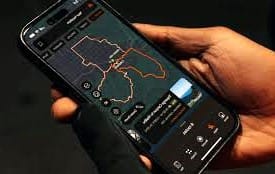Introduction
When Partners Turn to Litigants
Strava and Garmin have long been close collaborators: many users of Garmin devices upload their workouts to Strava, and Garmin has integrated Strava’s “Live Segments” into its ecosystem under cooperation. However, on September 30, 2025, Strava filed a lawsuit in the U.S. District Court for the District of Colorado (case no. 1:25-cv-03074) against Garmin Ltd. and Garmin International, Inc.
The complaint alleges that Garmin violated Strava’s patents (and a cooperation agreement) by using features similar to Strava’s “Segments” and “Heatmaps/Popularity Routing” in its Garmin Connect platform and on devices (watches, bike computers) without proper authorization. Strava is seeking both monetary damages and a permanent injunction to block Garmin from selling devices with those features.

What Exactly is Strava Claiming? Patents & Agreements
The Patents Involved
Strava is asserting infringement of at least three U.S. patents:
Patent 9,116,922 (filed in 2011, granted in 2015): covers “GPS segments” — user-defined route sections where athletes can compare performance over the same stretch.]
Patent 9,297,651 (filed 2014, granted 2016) & Patent 9,778,053 (filed 2016, granted 2017): cover technologies related to generating heatmaps (maps showing where people commonly run/ride) and popularity-based routing / suggestions based on user activity data.
The 2015 Master Cooperation Agreement (MCA)
Strava and Garmin entered into an agreement in 2015 to enable “Strava Live Segments” on Garmin devices. The MCA limited how Garmin could use Strava’s segment technology.
Strava argues that Garmin has expanded its own “Garmin-Segments” feature beyond what was permitted under the MCA, effectively copying or recreating Strava’s patented functionality without authorization.
Prior Art / Disputes about Timing
Garmin implemented some features like heatmaps in Garmin Connect as early as 2013, before the patents in question were filed. This means Garmin might challenge those patents on the basis of prior art.
Similarly, the segments feature’s origin and the exact implementation details (GPS gating, comparison, leaderboards, etc.) are central to whether Strava’s patents cover what Garmin has implemented.
What Strava Is Requesting
Strava’s lawsuit demands:
Permanent injunction to prevent Garmin from making, using, selling, or distributing the accused features (Segments, Heatmaps / Popularity-Routing) in devices/software.
Financial compensation for damages: lost revenue, harm to brand, erosion of network effects, competitive differentiation, etc.
Strava says that monetary damages alone are insufficient. The company claims Garmin’s actions have caused irreparable harm.
Potential Defenses & Challenges for Garmin
Garmin is likely to employ several lines of defense:
Prior Art / Invalidity of Patents
Since Garmin had some of these features (or similar ones) publicly in use before or around the time Strava’s patents were filed, Garmin may argue that Strava’s patents are not valid.Scope of the MCA Agreement
Garmin will likely contest what the 2015 cooperation agreement allowed/disallowed. If Garmin can show its current features fall outside the exclusivity or restrictions of the MCA, it may avoid injunctions.Statutes of Limitations / Laches
Because many of these features have existed for years, Garmin may assert that Strava should have filed sooner, or that there has been acquiescence. Although Strava counters that it notified Garmin in June/July 2025.User and Consumer Impact Arguments
If Garmin is barred from selling devices with these features, there may be pushback from users. Garmin could argue that many users depend on these features and that removing them would adversely affect consumers. Courts consider public interest in granting injunctions.

Implications for Users and the Ecosystem
Features Might Get Disabled: If Strava wins an injunction, many Garmin devices may lose segment or heatmap-style features, or Garmin might need to disable them in software updates.
Device Sales Could Be Blocked: Strava is seeking to stop sales of devices that implement the contested features, which would affect Garmin’s Edge bike computers, Forerunner / Fenix / Epix watches, etc.
Syncing Data Likely to Continue (for Now): Strava has stated it doesn’t want to disrupt your ability to sync workout data from Garmin devices to Strava. The lawsuit is targeting the features’ presence / sale, not user data uploads.
Brand / Partnership Relations Strained: This marks a turning point in how device makers and platform providers interact. What used to be partnership may become litigation as platforms try to protect IP, especially as features overlap.
Potential Ripple Effects in the Fitness Tech Industry: Other companies with overlapping features may pay more attention to patent clearance, agreements, and licensing. Also, users may rethink which platforms they use if features degrade or disappear.
Timeline & What Happened When
| Date | Key Event |
|---|---|
| Pre-2013 | Garmin had some heatmap-like features in Garmin Connect. |
| 2014 | Strava files Segment patent (2011 filed), and patents for heatmap / popularity routing filed 2014-2016. Garmin introduced its own “Segments” in some capacity in 2014 (Edge 1000) though with limitations. |
| 2015 | Strava and Garmin sign Master Cooperation Agreement (MCA) to integrate Strava Live Segments into Garmin devices, with certain restrictions. |
| June–July 2025 | Strava sends notices of infringement / breach to Garmin. |
| September 30, 2025 | Strava files lawsuit in Colorado seeking injunctions and damages. |
What to Watch Next
Garmin’s Legal Response: Will Garmin challenge validity of patents via Inter Partes Review (IPR)? Will Garmin claim prior art, or try to negotiate licensing?
Court’s Decision on Injunctions: True injunctions could have big impact — removing features or blocking sales of devices. Courts may weigh public interest / consumer harm.
User Reaction: How the community responds may matter — there’s risk of backlash from Garmin users who rely on these features.
Potential Settlement or License Deal: It’s possible Strava and Garmin settle out of court or Garmin agrees to license the patents.
Impact on Other Partners: Companies that interface with Strava / Garmin or build similar features may observe changes in how IP is policed or protected.
FAQs
Q1: What are “Segments” and “Heatmaps” in Strava’s context?
Segments are user-defined portions of a route (a climb, trail section, etc.) in which athletes compare their times to others’ past efforts.
Heatmaps / Popularity Routing are maps that visualize where people frequently run or ride, and suggest routes based on popularity of paths.
Q2: Which Garmin devices / features are affected?
Likely many: Edge cycling computers, Forerunner, Fenix, Epix watches, and features in Garmin Connect and associated on-device routing (Trendline / Courses). Any Garmin product offering Segments or route/popularity mapping or heatmap features may be at issue.
Q3: Will users lose data or sync functionality?
Strava says it does not intend to disrupt ability to sync activity data from Garmin to Strava. However, if an injunction is granted, features may be disabled in new devices or future software updates.
Q4: What does “prior art” mean here and why is it significant?
“Prior art” refers to published or public works before the patent’s filing date. If Garmin (or anyone) can show that the features were already implemented or described before the patent, the patent may be invalidated. For example, Garmin had heatmap-like functions in 2013, which predate Strava’s patents.
Q5: What is the worst-case scenario for Garmin?
If Strava wins everything: Garmin may have to disable features, lose device sales, pay damages, or license technology. Device models with those features might be pulled from sale. A large financial and reputational burden may result.
Q6: How might this affect Strava?
If successful, Strava could reinforce its IP protection and potentially generate licensing revenue. But pushing too aggressively risks user/community backlash. Also, changes in Garmin’s product strategy might hurt some portions of their value chain.
Conclusion
The Strava vs. Garmin lawsuit is a major escalation in the fitness tech world. It pits two major players in what was once a collaborative relationship against each other over IP, feature overlap, and corporate control.
For users, the immediate impact is uncertain — everything continues working for now. But in the long run, this case could reshape how features are shared, licensed, or claimed in fitness devices; it could change what Garmin does, how Strava defends its IP, and how the industry handles collaboration versus competition.
What you might do if you’re a user:
Track official updates from Garmin and Strava to see how your device/feature lineup may get affected.
Backup or export your data and maps in case some features are disabled.
Consider whether you need both platforms or if one can serve your needs.
Be ready for potential fees / changes (if Garmin ends up needing licensing or disabling features).
More Information: Visit Website
